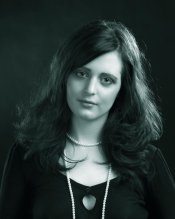Hi,
sorry if this is a stupid question, but is there a difference between a flash or continuous lighting setup for portraits? Or better said is one more suitable than the other for skin tones? Back in my digital days I used an alienbee setup with 400W monolights, which I really liked for the most part, but now after I moved to Germany, I am facing the lighting question again. The difference is that I am shooting 90% with b/w film nowadays. Yes, you can always use filters to maybe correct the color temperature of your lights, but I would prefer a system that already has a good color temperature balance for portraits on b/ww film.
Thank you for your opinions
Dennis
sorry if this is a stupid question, but is there a difference between a flash or continuous lighting setup for portraits? Or better said is one more suitable than the other for skin tones? Back in my digital days I used an alienbee setup with 400W monolights, which I really liked for the most part, but now after I moved to Germany, I am facing the lighting question again. The difference is that I am shooting 90% with b/w film nowadays. Yes, you can always use filters to maybe correct the color temperature of your lights, but I would prefer a system that already has a good color temperature balance for portraits on b/ww film.
Thank you for your opinions
Dennis











